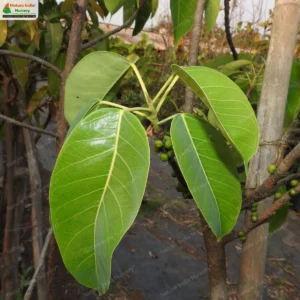Ficus tsjakela, also known as the Tsjakela fig, is a deciduous tree that grows up to 20 meters tall, although in some regions, it is commonly found growing to about 8-15 meters. It is native to peninsular India and Sri Lanka.
Ficus tsjakela is a versatile tree that thrives in various environments, including moist deciduous forests and plains. Its unique growth habit, starting as an epiphyte and becoming independent, allows it to adapt to different ecosystems.
Habitat
Ficus tsjakela is native to peninsular India and Sri Lanka, thriving in moist deciduous forests and plains, often in coastal regions and hilly areas up to 1,700 meters in elevation.
Planting and Care
-
Soil: Prefers well-drained soils in moist environments.
-
Watering: Requires consistent moisture, especially in its early stages.
-
Sunlight: Thrives in partial shade to full sun, depending on its growth stage.
Additional Information
-
Growth Habit: The tree is often epiphytic in its early stages but becomes independent as it matures.
-
Elevation: Can be found in hilly areas up to 1,700 meters in elevation.





















